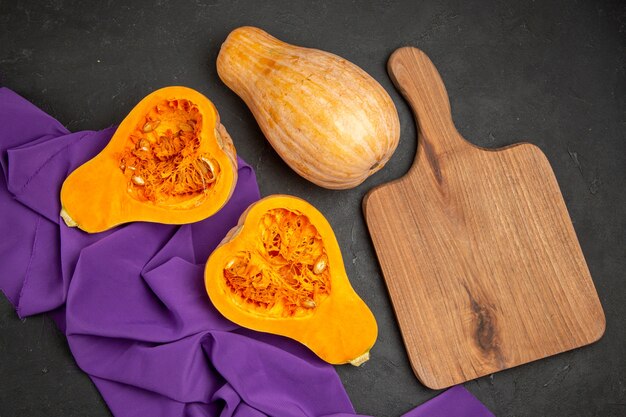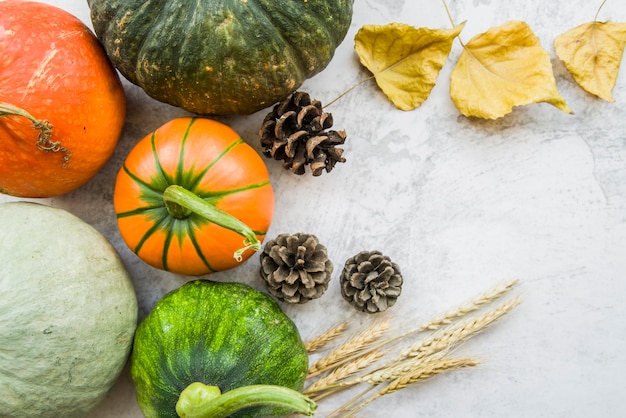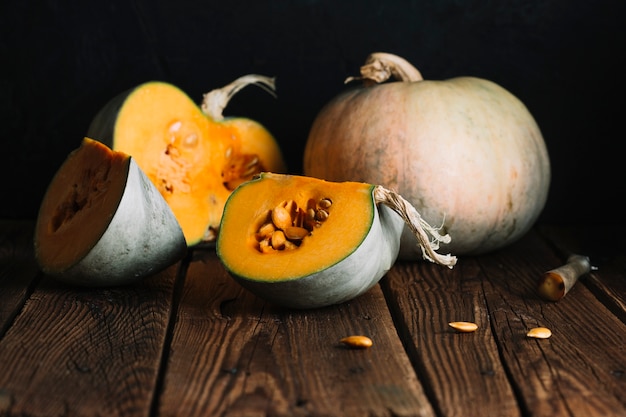Let's talk about acorn squash! It's one of those vegetables that might seem a bit intimidating at first glance – not your everyday potato, right? But trust me, it's wonderfully versatile and incredibly easy to cook. I've been playing around with acorn squash for years, trying different cooking methods and recipes, and I've learned a thing or two along the way.
This guide is your go-to source for all things acorn squash, from choosing the perfect one to nailing the ideal cooking time. I'm going to take you through everything step-by-step, sharing my personal tips and tricks that I've picked up over time. So, grab your apron, gather your ingredients, and let’s get cooking!
(Part 1) Choosing the Perfect Acorn Squash

Picking the Right Squash
The first step is choosing the right acorn squash. You want one that’s firm to the touch and free from any blemishes or soft spots. Think of it like a good avocado – you want it to feel solid and plump. You'll know it's ripe when you give it a gentle thump – it should have a deep, hollow sound. Imagine a good, resonant thump like a perfectly ripe melon!
Size Matters
The size of your squash will make a difference in how long it takes to cook. Smaller squashes will be quicker than larger ones. I usually go for ones that are around 1-2 pounds, which are just the right size for one or two people.
Storage is Key
Once you've got your perfect acorn squash, it's important to store it properly. Keep it in a cool, dry place, away from direct sunlight. Think of it like keeping your apples or potatoes – a cool, dark environment is best. Don’t worry, it can last for several weeks if you store it correctly.
(Part 2) Preparing Your Acorn Squash

Cleaning and Cutting
First, wash the acorn squash thoroughly under cold running water. You can use a vegetable brush to get rid of any stubborn dirt. Next, cut the squash in half lengthwise. You can use a sharp chef's knife or a good sturdy serrated knife – whatever you feel comfortable with. It's always a good idea to use a cutting board to protect your countertop.
Removing the Seeds and Pulp
Now, it's time to remove the seeds and pulp. I find that using a spoon is the easiest way to do this. You can either scoop the seeds and pulp out or you can use your fingers, but make sure to get all of the seeds and pulp out. It's important to get them out completely, otherwise, they might get burnt or taste bitter during cooking.
Salting and Pre-Seasoning
Here's a little trick I learned from my grandma. Before you start cooking, sprinkle the cut sides of the squash with a bit of salt. This helps to draw out some of the moisture and prevents the squash from becoming watery. It also helps to enhance the flavour. You can also add other seasonings like garlic powder, onion powder, or herbs, if you like. Personally, I love to add a pinch of smoked paprika or cayenne pepper for a bit of a kick.
(Part 3) Cooking Methods for Acorn Squash

Roasting: My Go-To Method
Okay, let’s get to the fun part – actually cooking the acorn squash! My absolute favourite way to cook acorn squash is to roast it. It's simple, easy, and results in a beautifully tender and flavourful squash.
Preheat Your Oven
Start by preheating your oven to 375°F (190°C). It's important to have a hot oven to get that perfect roast.
Place the Squash in a Baking Dish
Place the cut squash halves in a baking dish, cut-side up. Make sure there’s enough space between the halves so they can cook evenly.
Add Some Liquid
For extra flavour and moisture, you can add a little bit of water or broth to the bottom of the baking dish. This creates a steamy environment that helps the squash cook evenly.
Cover with Foil
Now, cover the squash halves tightly with aluminum foil. This helps to create a steamy environment which allows the squash to cook through and prevents the squash from drying out.
Cooking Time
The cooking time for roasted acorn squash will vary depending on the size of the squash. However, as a general rule of thumb, it will take about 30-45 minutes. You can check the doneness by inserting a fork into the center of the squash. If it goes in easily, it's cooked.
Baking: Another Great Option
Baking your acorn squash is another great way to cook it. It's a bit similar to roasting, but the squash is baked in a covered baking dish.
Prepare the Squash
Prepare your acorn squash the same way you would for roasting.
Bake the Squash
Place the cut squash halves in a baking dish, cut-side up. Cover the dish tightly with aluminum foil and bake at 350°F (175°C) for 30-45 minutes, or until the squash is tender.
Boiling: Simple and Fast
If you're looking for a quick and easy way to cook your acorn squash, boiling is a good option. It's a great choice if you're pressed for time.
Bring a Pot of Water to Boil
Fill a large pot with water and bring it to a rolling boil. Make sure the pot is large enough to hold the squash halves comfortably.
Add the Squash
Gently place the cut squash halves into the boiling water. Make sure the water covers the squash halves completely.
Reduce Heat and Simmer
Reduce heat to a simmer and cook for 15-20 minutes, or until the squash is tender. You can check for doneness by piercing the squash with a fork – it should go in easily.
Microwaving: For Speed
For those nights when you're short on time, microwaving your acorn squash is a quick and easy option.
Prepare the Squash
Prepare your acorn squash as usual.
Microwave the Squash
Place the cut squash halves in a microwave-safe dish. Add a little bit of water to the bottom of the dish. Cover the dish with a microwave-safe lid or plastic wrap. Microwave on high for 5-7 minutes, or until the squash is tender.
(Part 4) Knowing When Your Acorn Squash is Cooked
The Fork Test
The best way to know when your acorn squash is cooked is to use the fork test. Simply insert a fork into the centre of the squash. If it goes in easily, then your squash is cooked. You want the fork to glide through the squash with minimal resistance.
The Appearance Test
Another way to check is to look at the appearance of the squash. The flesh should be tender and slightly translucent. You might also notice that the edges of the squash are slightly browned, which indicates that it's been cooked properly.
(Part 5) Delicious Ways to Enjoy Your Acorn Squash
Savoury Dishes
Acorn squash soup: This is a creamy and delicious soup that's perfect for a cold autumn evening. Simply roast the squash, then blend it with some broth, cream, and spices. You can add a touch of sweetness with a drizzle of maple syrup or honey. A pinch of nutmeg or cinnamon adds warmth and depth.
Stuffed Acorn Squash: You can stuff acorn squash with all sorts of delicious things, like sausage, rice, quinoa, or even vegetables. For a hearty meal, try stuffing with a mixture of sausage, onions, and spinach. For a vegetarian option, try quinoa, black beans, and corn.
Acorn Squash with Herbs: For a simple and flavourful side dish, simply roast the squash and top it with fresh herbs like rosemary, sage, or thyme. A drizzle of olive oil and a squeeze of lemon juice adds a bright flavour.
Acorn Squash and Apple Salad: Combine roasted acorn squash with apples, pecans, and a honey-mustard dressing for a light and refreshing salad. Add some crumbled goat cheese or feta for a tangy twist.
Acorn Squash Risotto: Add chopped roasted acorn squash to your favourite risotto recipe for a boost of flavour and texture. The nutty flavour of the squash complements the creamy risotto perfectly.
Sweet Treats
Acorn Squash Pie: This is a delicious and unique pie that’s perfect for a special occasion. You can use a traditional pie crust or try a gluten-free option. The sweetness of the squash pairs well with cinnamon, nutmeg, and cloves.
acorn squash bread: Add some acorn squash to your favourite bread recipe for a moist and flavourful loaf. The squash adds a subtle sweetness and a beautiful golden hue to the bread.
Acorn Squash Muffins: Combine acorn squash, spices, and other ingredients for a healthy and delicious breakfast treat. You can add nuts, seeds, or dried fruit for extra texture and flavour.
(Part 6) Handy Tips for Cooking Acorn Squash
Tips for Roasting
Don't overcook the squash: Overcooked acorn squash can become dry and mushy. Keep an eye on the squash and check for doneness frequently.
Add a touch of sweetness: For a sweeter flavour, add a little bit of honey, maple syrup, or brown sugar to the squash. You can also add a pinch of cinnamon or nutmeg.
Use parchment paper: Line your baking sheet with parchment paper to prevent sticking. It also makes cleaning up a breeze.
Tips for Baking
Use a baking dish with a lid: This helps to create a moist environment that prevents the squash from drying out.
Add a little bit of water to the baking dish: This helps to steam the squash and make it more tender.
Tips for Boiling
Use a large pot: You'll need a large pot to accommodate the squash halves. Make sure the pot is deep enough so that the squash halves are completely submerged in water.
Don't overcook the squash: Overcooked acorn squash can become mushy. Check the squash for doneness frequently.
Tips for Microwaving
Use a microwave-safe dish: Be sure to use a dish that's safe for the microwave. Avoid using plastic containers, as they can melt.
Cover the dish: Cover the dish with a lid or plastic wrap to prevent splattering. This also helps to create a steamy environment.
(Part 7) acorn squash nutrition
A Healthy and Delicious Choice
Acorn squash is not only delicious, it's also a very healthy choice. It's a good source of vitamin A, vitamin C, potassium, and fibre. These nutrients are essential for overall health and wellbeing.
Rich in Antioxidants
Acorn squash is also rich in antioxidants, which help to protect your cells from damage. Antioxidants play a crucial role in preventing chronic diseases.
A Versatile Vegetable
The versatility of acorn squash makes it a great choice for any meal. It can be used in savoury and sweet dishes, and it's a great way to add some variety to your diet. It's also a great way to incorporate more vegetables into your meals.
(Part 8) FAQs
What does acorn squash taste like?
Acorn squash has a slightly sweet and nutty flavour. It's similar to butternut squash, but it has a more intense flavour. Some people describe it as having a hint of maple syrup or caramel.
Can I freeze acorn squash?
Yes, you can freeze acorn squash. To freeze, roast or bake the squash until tender, then scoop out the flesh and place it in freezer bags. Frozen acorn squash can be used in soups, stews, and other dishes.
How long does acorn squash last in the fridge?
Whole acorn squash can last for several weeks in the refrigerator if stored properly. Cut acorn squash can last for 3-5 days in the refrigerator.
What is the best way to serve acorn squash?
Acorn squash can be served as a side dish, a main course, or as part of a salad. It's also delicious stuffed with various fillings. It's a versatile vegetable that can be enjoyed in many ways.
Are there any other types of squash I can try?
There are many other types of squash you can try, including butternut squash, spaghetti squash, pumpkin, and kabocha squash. Experiment and find your favourites! Each type of squash has its own unique flavour and texture.
(Part 9) Final Thoughts
Well, there you have it! You're now officially an acorn squash expert. Go forth and conquer your kitchen with this delicious and versatile vegetable. Remember, cooking is all about experimenting and finding what you like best. So, don't be afraid to get creative and try new things. And most importantly, have fun! Happy cooking!
Everyone is watching

Prime Rib Roast Cooking Time Chart: Per Pound Guide
Cooking TipsPrime rib roast. Just the name conjures images of lavish dinners, crackling fires, and hearty laughter. It’s ...

How Long to Bake Potatoes in the Oven (Perfect Every Time)
Cooking TipsBaked potatoes are a staple in my kitchen. They're incredibly versatile, delicious, and surprisingly easy to m...

Perfect Rice Every Time: The Ultimate Guide to Cooking Rice
Cooking TipsAs a self-proclaimed foodie, I've always been a bit obsessed with rice. It's the foundation of countless cuisi...

The Ultimate Guide to Cooking Asparagus: Tips, Techniques, and Recipes
Cooking TipsAsparagus. The mere mention of this spring delicacy conjures up images of vibrant green spears, crisp and burs...

Ultimate Guide to Cooking the Perfect Thanksgiving Turkey
Cooking TipsThanksgiving. Just the word conjures up images of overflowing tables laden with delicious food, the scent of r...
